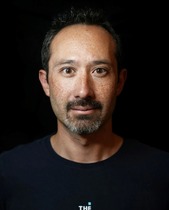
Digital Art
Digital Art is a creative practice that uses digital technology as an essential part of the artistic process. At its core, digital art refers to any artistic work created or enhanced using digital technology. Just like traditional fine art, digital art offers multiple mediums and styles that artists can use to express themselves — from digital photography, computer graphics and pixel art to more experimental mediums such as AI-generated art and AR art, everything goes in the spectrum of digital art. Today, digital art is ever-evolving and radical in the way it is produced, distributed, and viewed. It has revolutionized traditional art forms, extending the reach of creative possibilities.
EMERGENCE OF DIGITAL ART
The emergence of digital art and NFTs has brought significant changes to the art world.
The rise of the internet and social media has made it easier for artists to share their work with a global audience.
Digital art is a rapidly growing art form with a wide range of applications, operating in a variety of industries including advertising, entertainment, gaming and fashion.
NFT art is a digital creation tokenized on a blockchain, providing verifiable ownership and scarcity
As investments in art evolve, NFT art has become an opportunity for artists and buyers alike to venture into a modern approach to digital artworks.
NFTs come in many forms and include anything considered as art, such as a photograph, physical artwork which has been converted into digital form or a picture made with digital media.
They have the potential to be profitable and are fast becoming the future of digital fine art collecting.
ADVANTAGES OF DIGITAL ART
Flexibility and Editability.
One of the biggest perks is how easy it is to make changes. This gives artists more freedom to explore their creativity.
Tools and Effects.
Digital art offers a wide variety of tools that might be impossible or difficult to replicate in traditional mediums, like brushes that mimic real media, gradient tools, and texture effects.
Preservation and Reproduction.
You can make unlimited high-quality copies without losing any detail, and you can store it securely in cloud services, ensuring your work lasts.
Collaborative Potential.
Whether it’s working on the same file in real-time with someone else or sharing drafts over the internet, digital tools make it easier to work with other people no matter where they are.













